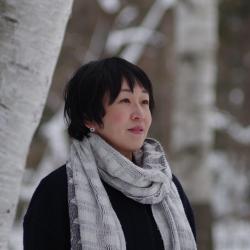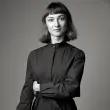Your Interview Kaori Endo

Kaori Endo
Designer
Japan
Introduce yourself (name, company, position, country) and tell us how you got into lighting design (including education/qualifications).
My name is Kaori Endo. I am a lighting designer and the founder of Kaori Endo Lighting Design.
I started to get interested in lighting during my study at my university in Hokkaido, which is the most northerly prefecture in Japan. I always created something related to light before I knew it, and realized the reason later on—light changes how things look and affected things that I found beautiful.
When my graduation was coming close, I did some internship under a luminaire designer and a stage lighting engineer, but I thought that creating space with light would be something for me. I went to Tokyo because there was only one lighting design company in Hokkaido, and met a lot of lighting designers to look for a job. Finally, I got a position as an intern at a company and that’s when I got into the lighting design field.
After working there for four years, I moved to Sweden to study further at the Master’s program in Architectural Lighting Design at the Royal Institute of Technology, KTH, in 2007. I got a job at a local lighting design company before my graduation and wrote my master’s thesis while working. I lived in Sweden for seven years. Since I moved back to Japan, I’ve been working as a lighting designer based in Sapporo, Hokkaido.
Tell us about your work – is there a specific type of project you like to work on or an area you specialise in and why?
Recently I’ve worked on a lot of hotel projects, especially in ski resorts but my works are from small projects like houses to large like landscapes. The scale of the projects doesn’t matter to me. Although I like projects in any category, it would be ideal if they can cover both indoor and outdoor. Since indoor and outdoor are continuous and inseparable, I would like to approach the space from both sides when possible. Also, I prefer projects that people can use in a long-term period after completion.
What project are you most proud of and why?
I’ve been working on a luxury ski resort project. It’s outdoor, and it was a challenge to make the design fit to the location where it snows heavily. My experience in Sweden was useful too. I took into account the amount and the reflection of the snow because the condition on the site was quite different between summer and winter. Perhaps not so many project have been done yet in this kind of extreme environments even in the world, so it was a very challenging and fulfilling project.
What is the biggest challenge that you have overcome in your career?
Maybe it was when I had to juggle three things at the same time when I first started to work in Sweden. I had to learn a foreign language—Swedish, and work in a different working culture in the daytime, while writing my master’s thesis in academic English later at home. I needed to switch one to another in my head. It took me quite a long time to get used to the situation.
How does light inspire you?
Light is something that would give us a pleasant and comfortable feeling even though we aren’t conscious of it usually.
It’s something vital, like air.
It’s essential and always exists in my daily life.
What is your message for other Women In Lighting?
I hope we can inspire people, including those who work in other fields. There are still much fewer women when extending the fields to the construction or architecture industries not only lighting.
In Japan, the ratio of females in the lighting design field is relatively high. Still, I have the impression that there are fewer female leaders in it. Of course, we have female leaders like Motoko Ishii. However, I would say it’s more like male-dominated in the generations after them when it comes to leaders. In Sweden, I saw having a family didn’t affect women’s career much, and there were many female workers at the executive level. On the other hand, in Japan, some working women leave their jobs mainly in their 30’s because of their life events not only in the lighting design field but any. I feel a significant gap between these two countries on that matter, although I understand they have different cultures and situations. I think leaving work for childcare could afterwards affect the possibility if they can become a leader or not. I hope that we can diminish that kind of cases eventually.
—
Interviewed by Lyshus; Translated by Akane H
“Light is something vital, like air.
It’s essential and always exists in my daily life.”
Selected portfolio:
_1_-_28de80_-_cba5cb21147f1e5ca5b2f7ed09b40d1f631eb270.jpg)
_1_-_28de80_-_416f906dc67547964890a0cc16a7a85322a54201.jpg)
_1_-_28de80_-_eac9b3ba735695b175deacd765a6e06d15de41b2.jpg)




